
Catalog Advanced Search
-
Contains 1 Component(s) Includes a Live Web Event on 06/12/2024 at 12:00 PM (EDT)
In this session, a newly developed approach to drive and guide sustainable product design innovation will be presented: the Sustainable North Star. This approach combines different capabilities and expertise areas in one single process. From Lifecycle assessment to User Research and Value Chain Mapping. Through a tangible case study, this session will provide actionable guidance on how to define a long-term sustainable vision for a product, translate it into tangible proofs of concept and derive a roadmap from it. Find out more about this approach here: http://www.accenture.com/sustainablenorthstarguide
Presented by the Sustainability Technical Group
In this session, a newly developed approach to drive and guide sustainable product design innovation will be presented: the Sustainable North Star. This approach combines different capabilities and expertise areas in one single process. From Lifecycle assessment to User Research and Value Chain Mapping. Through a tangible case study, this session will provide actionable guidance on how to define a long-term sustainable vision for a product, translate it into tangible proofs of concept and derive a roadmap from it. Find out more about this approach here: http://www.accenture.com/susta...
Francesco de Fazio
Francesco De Fazio is a Senior Sustainability Design Engineer at Accenture Industry X. Prior to joining Accenture, he worked as Circular Design Engineer at Philips and as Researcher at Delft University of Technology. In his current role, Francesco supports companies in bridging the gap between corporate-level sustainability strategy in product innovation roadmaps, design requirements and solutions development. He would like to present about the Sustainable North Star approach. This is a newly developed sustainable product innovation approach, which combines different capabilities and expertise areas in one single process. From Lifecycle assessment to user research and value chain mapping The goal of this approach is to define a long term sustainable vision for a product, translate it into tangible proof of concepts and then derive a roadmap from it. He and his team thoroughly documented this approach in an extensive design guide, publicly available at: http://www.accenture.com/sustainablenorthstarguide
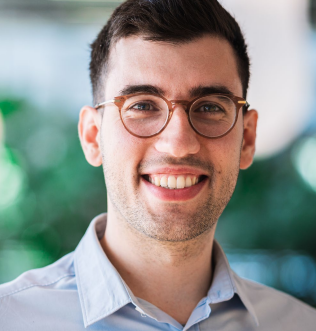
Francesco De Fazio
Senior Sustainability Design Engineer
Accenture
Francesco De Fazio is a Senior Sustainability Design Engineer at Accenture Industry X. Prior to joining Accenture, he worked as Circular Design Engineer at Philips and as Researcher at Delft University of Technology. In his current role, Francesco supports companies in bridging the gap between corporate-level sustainability strategy in product innovation roadmaps, design requirements and solutions development. He would like to present about the Sustainable North Star approach. This is a newly developed sustainable product innovation approach, which combines different capabilities and expertise areas in one single process. From Lifecycle assessment to user research and value chain mapping The goal of this approach is to define a long term sustainable vision for a product, translate it into tangible proof of concepts and then derive a roadmap from it. He and his team thoroughly documented this approach in an extensive design guide, publicly available at: http://www.accenture.com/sustainablenorthstarguide
-
Register
- Member - Free!
- More Information
-
Register
-
Contains 1 Component(s) Includes a Live Web Event on 04/25/2024 at 6:00 PM (EDT)
The study presented today is part of a validation effort to determine the extent to which AI-driven simulation-based instruction can alleviate pilot training pipeline pain points experienced by many militaries around the world. The main objective was to verify the training benefits of synthetic coaching, feedback, and biometrics using an immersive training device. Results are presented in terms of both technology acceptance and training effects over time to achieve the desired proficiency level across basic pilot maneuvers.
Presented by the Training Technical Group
The study presented today is part of a validation effort to determine the extent to which AI-driven simulation-based instruction can alleviate pilot training pipeline pain points experienced by many militaries around the world. The main objective was to verify the training benefits of synthetic coaching, feedback, and biometrics using an immersive training device. Results are presented in terms of both technology acceptance and training effects over time to achieve the desired proficiency level across basic pilot maneuvers.
Dr. Sandro Scielzo
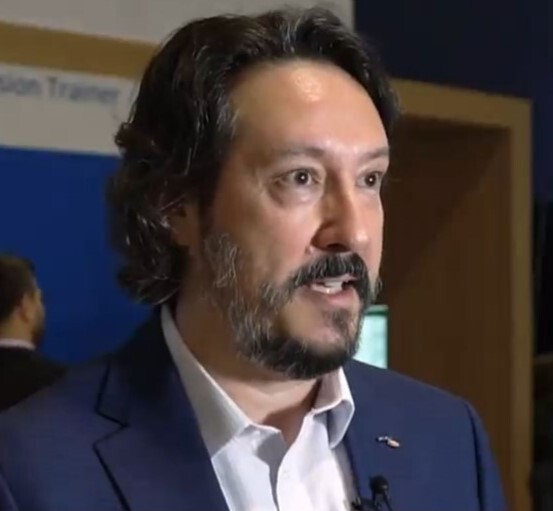
Sandro Scielzo is a Human Systems Technical Authority and Learning Science Fellow at CAE USA. Dr. Scielzo received his PhD in Applied Experimental Human Factors and M.S. in Modeling & Simulation from the University of Central Florida in 2008 and 2005 respectively. His research has concentrated on the validation and implementation of next generation training solutions for military and commercial applications. Over the course of his career, Dr. Scielzo oversaw a wide portfolio of DoD R&D applied research projects to enhance warfighter training and readiness
-
Register
- Member - Free!
- More Information
-
Register
-
Contains 21 Product(s)
The Titans Symposium is an ideal opportunity to gain knowledge and insights into important HFE areas such as situation awareness, attention, decision-making, spinal ergonomics, human error, team cognition and interaction, automation, autonomous vehicles, telepresence, patient safety, macro-ergonomics, aging, inclusion, stress, human system interactions, and team effectiveness.
The Titans of HFE Virtual Symposium is a showcase of some of the premier researchers, practitioners, and academicians in HFES. Speakers presented on the foundational areas of the science of human factors and ergonomics and will provide their insights into the future of HFE.
The Titans Symposium is an ideal opportunity to gain knowledge and insights into important HFE areas such as situation awareness, attention, decision-making, spinal ergonomics, human error, team cognition and interaction, automation, autonomous vehicles, telepresence, patient safety, macro-ergonomics, aging, inclusion, stress, human system interactions, and team effectiveness.
Whether you are an early-career professional, student, seasoned researcher, or practitioner, the Titans Symposium provides the opportunity to learn about the fundamental concepts, recent developments, and future initiatives through the eyes of the experts.
Chair, Kermit G. Davis, University of Cincinnati
-
Register
- Non-member - $199
- Member - $75
- More Information
-
Register
-
Contains 1 Component(s)
Circularity trends have seen an exponential increase since the early 2000s. Our speakers will speak about circularity in their organizations. Focusing on how accelerating the circular economy through reuse, sustainable design adoption, and recycling can positively impact your company's environmental footprint.
Circularity trends have seen an exponential increase since the early 2000s. Our speakers will speak about circularity in their organizations. Focusing on how accelerating the circular economy through reuse, sustainable design adoption, and recycling can positively impact your company's environmental footprint.
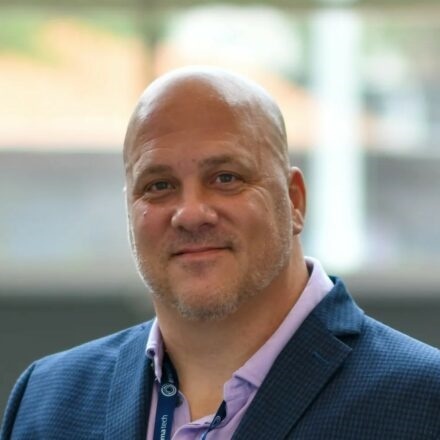
Nick Abbatiello
Sr. Director and Sr. Distinguished Engineer
Dell
Nick is currently a Senior Distinguished Engineer in DELL Technologies’ Experience Design Group. He joined DELL sixteen years ago from the former General Electric Plastics business where he worked for twelve years. He first became interested in materials while studying Mechanical Engineering at Rochester Institute of Technology which continued while perusing his MS degree in Manufacturing Engineering at the University of Rhode Island.
For the past thirteen + years he has been focused on driving innovation in key areas such as new materials, manufacturing processes and coating technology. He and his team are now focused on developing strategy and implementing solutions for DELL’s 2030 Progress Made Real sustainability goals focused on the Circular Economy. He enjoys challenging the status quo while pushing the limits in developing materials and processes which reduce the impact on the environment.
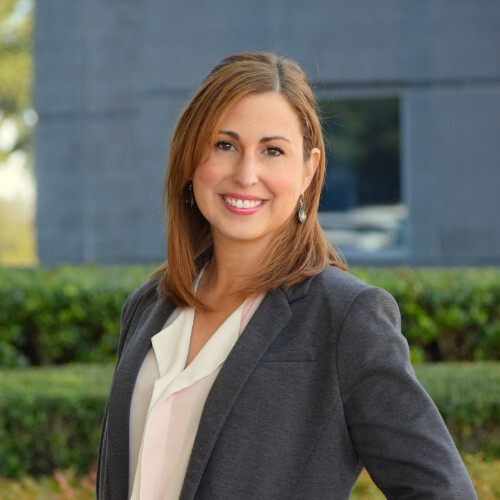
Alyson Freeman
Sustainability Product Manager
Dell
Alyson Freeman leads the environmental sustainability strategy for data center and infrastructure solution products. She identifies new growth areas, initiatives, and emerging opportunities to enhance the sustainability of Dell Technologies products and services, optimizes existing solutions, and defines next generation initiatives.
She has 20 years’ experience in engineering and management roles at NASA, Los Alamos National Laboratory, Samsung, Intel, and Dell Technologies. Her Ph.D. is in electronic materials with a focus on semiconductors.
Freeman is also global lead for the Women in Action employee resource group at Dell Technologies, a co-founder and former chair of Women in Technology at Samsung Austin Semiconductor, a board member of Westwood STEM Academy, and co-founded a global Coding for Kids program at Dell Technologies.
Amrita Maguire (Moderator)
User Interface Engineer
Dell
Amrita is a User Interface Engineer at Dell, where she is a Distinguished Member Technical Staff in the Technical Leadership Community (TLC). The TLC represents about 1% of Dell's engineering community. Amrita has been pivotal in transforming user experiences in Data Center Infrastructure Hardware design since 2013 and has co-authored 11 US Patents. Prior to 2013, she drove best-in-class usability in 7 laptops and Dell’s first three rugged laptop offerings.
Before joining Dell in 2011, Amrita spent 11 years at General Motors; seven years as a Platform Lead Ergonomics Engineer, where she focused on the design and integration of ergonomic tools and processes across seven assembly plants in the North America. From 2000 she was the Plant Ergonomist responsible for reducing work-related OSHA injuries/illnesses through ergonomic and safety engineering interventions.
Amrita is the incoming Chair of the HFES Usability Technical Group, Program Chair-Elect of the recently formed HFES Sustainability Technical Group, she also chairs the ISO 159 SC5 Standards Committee (Ergonomics of the Physical Environment), is a HFES 100 standards committee member and volunteers with the HFES BIPOC AG.
Amrita holds a Master of Science in Bioengineering from Texas A&M University and a Bachelor of Biomedical Engineering from the University of Mumbai (Bombay), India.
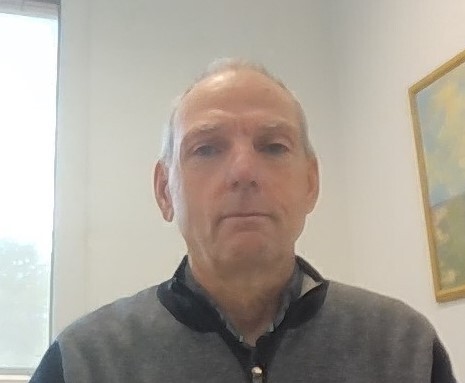
Renaut Mosdale
CEO
HYNOLOGY
Renaut Mosdale is the CEO of HYNOLOGY, a company started in 2022 to develop and industrially produce electrochemical components for hydrogen/air fuel cells and electrolyzers with a focus on heavy duty mobility markets and hydrogen production.
Renaut has more than 30 years’ experience in hydrogen research and development both at academic and industrial level. After completing a Ph.D. on water management in PEM (Polymer Exchange Membrane) Fuel Cells, he spent 2 years in Dr. Srinivasan’s Electrochemistry laboratory at Texas A&M University, USA. After returning to France, Renaut worked for PSA Peugeot/Citroën (car industry) and for the CEA (French National laboratory). Renaut created his first start-up, PaxiTech, in 2003, which he ran for 15 years and contributed in some other organizations in the hydrogen technology field. His latest company, HYNOLOGY, was launched in May 2022.
-
Register
- Non-member - Free!
- Member - Free!
- More Information
-
Register
-
Contains 1 Component(s)
Recorded on Thursday, October 26th, 2023 at the HFES 67th International Annual Meeting
This expert panel is the second of a two-panel series marking the 40th anniversary of “Cognitive Systems Engineering: New Wine in New Bottles” by Hollnagel and Woods (1983) and, arguably, the beginning of Cognitive Systems Engineering (CSE). These experts were there at (or near) the beginning. They wrestled with the daunting issues of how to apply new CSE findings, many of which they discovered, into workable solutions that actually improved systems performance in high-uncertainty, high-stakes settings. Their work has been implemented in a number of fields, including aviation, healthcare, power generation, and defense. They will each answer the question, “What ideas and perspectives are important about Cognitive Systems Engineering, and why?”
Recorded on Thursday, October 26th, 2023, at the HFES 67th International Annual Meeting in Washington, DC.

Dr. Michael F. Rayo (Moderator)
The Ohio State University

Mr. William Elm
Resilient Cognitive Solutions
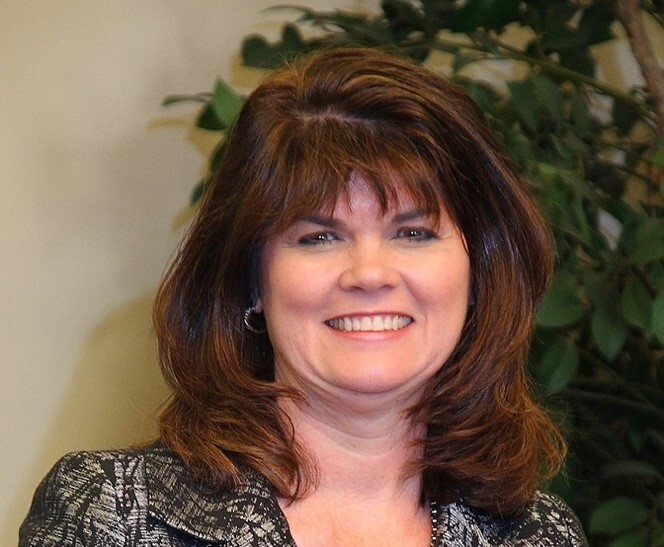
Dr. Mica Endsley
Dr. Mica Endsley is President of SA Technologies and is the former Chief Scientist for the US Air Force. She has also held the positions of Visiting Associate Professor at MIT in the Department of Aeronautics and Astronautics and Associate Professor of Industrial Engineering at Texas Tech University. Dr. Endsley is a Fellow and Past-President of the Human Factors and Ergonomics Society. She received a Ph.D. in Industrial and Systems Engineering from the University of Southern California. Dr. Endsley is a recognized world leader in the design, development and evaluation of systems to support human situation awareness (SA) and decision-making, and the integration of humans and automation. She has authored over 200 scientific articles and is the co-author of Analysis and Measurement of Situation Awareness and Designing for Situation Awareness and recently published Situation awareness measurement: How to measure situation awareness in individuals and teams.

Ms. Laura Militello
Applied Decision Science, LLC

Dr. Chris Nemeth
Applied Research Associates

Dr. Emilie Roth
Roth Cognitive Engineering
-
Register
- Non-member - Free!
- Member - Free!
- More Information
-
Register
-
Contains 1 Component(s)
Recorded on Thursday, October 26th, 2023, at the HFES 67th International Annual Meeting in Washington, DC.
This expert panel is the first of a two-panel series marking the 40th anniversary of “Cognitive Systems Engineering: New Wine in New Bottles” by Hollnagel and Woods (1983) and, arguably, the beginning of Cognitive Systems Engineering (CSE). These experts were there at (or near) the beginning, devising new methods, expanding and creating new theories, and revealing a new perspective on how complex systems sustain performance and fail. They also wrestled and struggled with these new ideas to propose and implement solutions to improve performance in a number of high-consequence industries. Whether in graduate school or as early-career professionals, they saw the surprises that served as signals that the thinking that brought us to that point would not, alone, be the thinking and doing that would take us further. They will each answer the question, “What ideas and perspectives are important about Cognitive Systems Engineering, and why?”
Recorded on Thursday, October 26th, 2023, at the HFES 67th International Annual Meeting in Washington, DC.

Dr. Michael F. Rayo (Moderator)
The Ohio State University
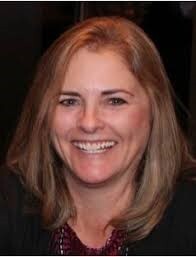
Nancy Cooke
Director, Center for Human, AI, and Robot Teaming Professor, Human Systems Engineering, Ira A. Fulton Schools of Engineering
Arizona State University

Dr. John Flach
Mile Two, LLC

Dr. Robert Hoffman
Institute for Human and Machine Cognition

Dr. Philip Smith
The Ohio State University

Dr. David Woods
The Ohio State University
-
Register
- Non-member - Free!
- Member - Free!
- More Information
-
Register
-
Contains 1 Component(s)
Recorded on Thursday, October 26th, 2023, at the HFES 67th International Annual Meeting in Washington, DC.
Dr. Lawrence E. Jones is an award winning, thought leader and practitioner with over twenty-five years of experience in the energy industry. He joined Edison Electric Institute (EEI) in September 2015 and is currently Senior Vice President, International Programs. Under his leadership, EEI’s International Programs membership has grown to more than 70 electric companies with operations in over 91 countries, providing electricity to more than 3 billion people. He has launched several new strategic initiatives including Annual Global Electricity Forum, Africa Utility Power Sector Exchange, Global Executive Leader Network, Thomas Edison Nikola Tesla Impactful Leadership (TENTIL) Dialogue, and the Thomas Edison International Utility Executive Fellowship Program. He founded and is host of Influential Minds – an EEI international conversation series with leading thinkers and practitioners from energy and adjacent industries, finance, governments, etc. Prior to joining EEI, Dr. Jones held leadership roles at Alstom USA including North America Vice President for Utility Innovation and Infrastructure Resilience; and North America Vice President for Policy, Regulatory Affairs & Industry Relations. Before joining Alstom, he consulted with ABB (now Hitachi) in Sweden, and was a visiting scientist at Electricite de France in Clamart, France.
He is a Member of Global Board of the World Resources Institute, and Member of the Advisory Board of Sentient Hubs. He is also Adjunct Professor, Faculty of Engineering at Monash Energy Institute, Monash University; a Senior Associate (non-Resident) with the Energy and Security Program at the Center for Strategic and International Studies; and Senior Fellow at Boston University Institute of Sustainable Energy. He has received several patents for systems that improve situational awareness in energy grid control centers.
He received his MSc, Licentiate and Ph.D. degrees in Electrical Engineering from the Royal Institute of Technology in Stockholm, Sweden. He is a Senior Member of the IEEE.Recorded on Thursday, October 26th, 2023, at the HFES 67th International Annual Meeting in Washington, DC.
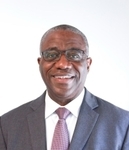
Dr. Lawrence E. Jones
Senior Vice President, International Programs
Edison Electric Institute
Dr. Lawrence E. Jones is an award winning, thought leader and practitioner with over twenty-five years of experience in the energy industry. He joined Edison Electric Institute (EEI) in September 2015 and is currently Senior Vice President, International Programs. Under his leadership, EEI’s International Programs membership has grown to more than 70 electric companies with operations in over 91 countries, providing electricity to more than 3 billion people. He has launched several new strategic initiatives including Annual Global Electricity Forum, Africa Utility Power Sector Exchange, Global Executive Leader Network, Thomas Edison Nikola Tesla Impactful Leadership (TENTIL) Dialogue, and the Thomas Edison International Utility Executive Fellowship Program. He founded and is host of Influential Minds – an EEI international conversation series with leading thinkers and practitioners from energy and adjacent industries, finance, governments, etc. Prior to joining EEI, Dr. Jones held leadership roles at Alstom USA including North America Vice President for Utility Innovation and Infrastructure Resilience; and North America Vice President for Policy, Regulatory Affairs & Industry Relations. Before joining Alstom, he consulted with ABB (now Hitachi) in Sweden, and was a visiting scientist at Electricite de France in Clamart, France.
He is a Member of Global Board of the World Resources Institute, and Member of the Advisory Board of Sentient Hubs. He is also Adjunct Professor, Faculty of Engineering at Monash Energy Institute, Monash University; a Senior Associate (non-Resident) with the Energy and Security Program at the Center for Strategic and International Studies; and Senior Fellow at Boston University Institute of Sustainable Energy. He has received several patents for systems that improve situational awareness in energy grid control centers.
He received his MSc, Licentiate and Ph.D. degrees in Electrical Engineering from the Royal Institute of Technology in Stockholm, Sweden. He is a Senior Member of the IEEE.-
Register
- Non-member - $25
- Member - Free!
- More Information
-
Register
-
Contains 1 Component(s)
Recorded on Tuesday, October 24th, 2023, at the HFES 67th International Annual Meeting in Washington, DC.
Dr. Claire Gordon joined the US Army civilian workforce in 1983 as a research anthropologist and retired 30 years later as the US Army Senior Research Scientist in Biological Anthropology. During her illustrious career, Dr. Gordon designed and led the execution of the 1988 and 2012 US Army anthropometric surveys and innovated sampling and analytical methodologies which are now the gold standard for anthropometric surveys. Her work on uniforms, body armor systems, vehicle design, and workstations focused on the physical accommodation of all Soldiers. This Discussion Panel gathers experts who worked directly with Dr. Gordon or were directly influenced by her work. They will discuss Dr. Gordon’s impact on the field of anthropometry, her legacy championing minority accommodation, and the lessons she taught as a mentor to the next generation of anthropologists. The facilitated discussion will include an open dialogue and audience participation.
Recorded on Tuesday, October 24th, 2023, at the HFES 67th International Annual Meeting in Washington, DC.

Mr. Joseph Parham (Moderator)
U.S. Army

Dr. Robert Walker
Northeast College of Health Sciences
Dr. Rob Walker received his B.A. in Anthropology from the University of Arkansas at Fayetteville in 1980. He received his M.A. in anthropology from Kent State University in 1982, and graduated with a Ph.D. in Biomedical Sciences with a specialty in Biological Anthropology in 1989. Dr. Walker's first professional job was as the Field Supervisor of the U.S. Army's 1988 Anthropometric Survey (ANSUR) at the U.S. Army Natick R,D, and E Center. He then took a postdoctoral position at the Northwestern University College of Medicine, and from there took a teaching position in human gross anatomy at the Northeast College of Health Sciences in Seneca Falls, New York. He held positions of faculty member, head of basic sciences, and Founding Dean of the Clinical Anatomy M.S. program there. Dr. Walker taught anatomy, histology, and biological anthropology at Kent State University, Northeast Ohio Medical University, Northwestern University Colleges of Medicine and Dentistry, and the Northeast College of Health Sciences. He retired from active teaching in 2020, but continues to be active in research.

Bruce Bradtmiller
Senior Consulting Scientist
Anthrotech, Inc.
Dr. Bruce Bradtmiller, a physical anthropologist, is Senior Consulting Scientist at Anthrotech. Since joining the firm in 1983 Dr. Bradtmiller has designed, conducted, and directed a number of body size surveys and other anthropometric research projects. He has worked on anthropometric accommodation for an array of products including: respirators, eyewear, helmets, gloves, dress and functional clothing, chemical protective garments, implantable cardiac defibrillators, automotive lumbar supports, infant car seats and breast pumps.

Dr. Laurie Rush
U.S. Army
Dr. Laurie Rush has a BA from Indiana University and an MA and PhD from Northwestern. She has been the Army Archaeologist and Native American liaison at Fort Drum for over twenty years. Her research specialty is Native Americans of the Great Lakes, and she is also an internationally recognized authority on protecting cultural heritage. Dr. Rush has represented the Central Command Environmental Program throughout the Middle East and has served as a NATO advisor on cultural property issues. She is a Fellow of the American Academy in Rome, a University of Pennsylvania Consulting Scholar and a Smithsonian Research Associate.
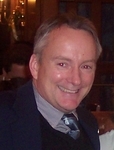
Dr. Robert Fox
University of Michigan
Bob Fox has 40 years of experience in the field of ergonomics, human factors and physical anthropology. He has worked in General Motors North American and global ergonomics activities from 1993 until May of 2022 and is both an HFES and IEA Fellow. He chairs the US Technical Advisory Group (TAG) to the International Standards Organization (ISO) for anthropometry and biomechanics and participates in various work groups for ANSI and ISO ergonomics standards and reports. He participates on the NORA Cross-Sector Councils for both MSDs and Healthy Work Design, the ACGIH Physical Agents Committee, the IEA Technical Committee on Musculoskeletal Disorders, USCAR and the ASTM F48.02 subcommittee on Human Factors and Ergonomics for exoskeletons. He has authored journal articles on manual material handling, the Revised NIOSH Lift Equation, work-related musculoskeletal disorders and ergonomics and aging.

Dr. Hyegjoo Choi-Rokas
U.S. Army

Ms. Lori Basham
U.S. Navy
-
Register
- Non-member - Free!
- Member - Free!
- More Information
-
Register
-
Contains 1 Component(s)
This webinar is organized by the Black, Indigenous, People of Color (BIPOC) Affinity Group to discuss DEI within HFES and beyond. There is lots of effort towards establishing and maintaining Diversity, Equity and Inclusions (DEI) programs within companies and institutions. But how do these approaches coalesce into organizational “inclusive excellence”? This 90 minute webinar will consist of short presentations from each of our speakers followed by a panel discussion. During this webinar, the need for a science-based approach to DEI will discussed. Additionally, there will be discussion around the difficulties of DEI efforts in our current political landscape and how do we move forward Our distinguished speakers and panelists are: • Dr. Rod Roscoe, Associate Professor, from the Arizona State University, Human Systems Engineering, The Polytechnic School • Dr. Renaldo C. Blocker, Associate Professor, from the Mayo Clinic, and Endowed Kern Honored Investigator for Diversity Science
This webinar is organized by the Black, Indigenous, People of Color (BIPOC) Affinity Group to discuss DEI within HFES and beyond.
There is lots of effort towards establishing and maintaining Diversity, Equity and Inclusions (DEI) programs within companies and institutions. But how do these approaches coalesce into organizational “inclusive excellence”? This 90 minute webinar will consist of short presentations from each of our speakers followed by a panel discussion. During this webinar, the need for a science-based approach to DEI will discussed. Additionally, there will be discussion around the difficulties of DEI efforts in our current political landscape and how do we move forward
Our distinguished speakers and panelists are:
- Dr. Rod Roscoe, Associate Professor, from the Arizona State University, Human Systems Engineering, The Polytechnic School
- Dr. Renaldo C. Blocker, Associate Professor, from the Mayo Clinic, and Endowed Kern Honored Investigator for Diversity Science
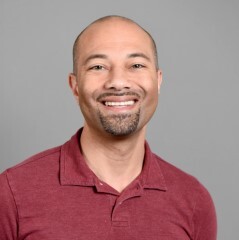
Dr. Rod Roscoe
Associate Professor, Arizona State University, Human Systems Engineering, The Polytechnic School
Associate Professor, Arizona State University, Human Systems Engineering, The Polytechnic School

Dr. Renaldo C. Blocker
Associate Professor, Mayo Clinic, Endowed Kern Honored Investigator for Diversity Science
Associate Professor, Mayo Clinic, Endowed Kern Honored Investigator for Diversity Science

Ninica Howard (Moderator)
Senior Researcher

Areen Alsaid (Moderator)
-
Register
- Non-member - $49
- More Information
-
Contains 1 Component(s)
Have you ever thought about where to go to improve your ergonomics knowledge or skills? Is there ergo information you’re seeking but can’t find a resource to provide it? At HFES and AES, we are here to share information from our experts and help you sharpen those skills. In this session, you will learn about three university-based continuing education training programs. Representatives from Auburn University, Colorado State University, University of California, San Francisco, and University of California, Berkeley will share information about their programs (material, objectives, target audience, format, etc.). You will have an opportunity to ask questions and join in a discussion of the benefits and training needs of those who apply ergonomics in the workplaces.
Have you ever thought about where to go to improve your ergonomics knowledge or skills? Is there ergo information you’re seeking but can’t find a resource to provide it? At HFES and AES, we are here to share information from our experts and help you sharpen those skills. In this session, you will learn about three university-based continuing education training programs. Representatives from Auburn University, Colorado State University, University of California, San Francisco, and University of California, Berkeley will share information about their programs (material, objectives, target audience, format, etc.). You will have an opportunity to ask questions and join in a discussion of the benefits and training needs of those who apply ergonomics in the workplaces.
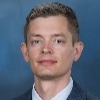
Mark Schall, PhD, CPE
Associate Professor of Industrial and Systems Engineering and the Director of the Center for Occupational Safety, Ergonomics, and Injury Prevention
Auburn University
Mark C. Schall, Jr. is the Daniel F. and Josephine Breeden Associate Professor of Industrial and Systems Engineering and the Director of the Center for Occupational Safety, Ergonomics, and Injury Prevention in the Samuel Ginn College of Engineering at Auburn University. Dr. Schall serves as the program director of the Occupational Safety & Ergonomics (OSE) and Occupational Injury Prevention (OIP) academic training programs in collaboration with the University of Alabama-Birmingham as part of the Deep South Center for Occupational Health and Safety, one of 18 National Institute for Occupational Safety and Health (NIOSH) Education and Research Centers. Dr. Schall’s research focuses on developing direct measurement techniques to enhance objective exposure assessment in ergonomics and applying those techniques to improve working people’s health, safety, and well-being.
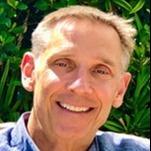
John Rosecrance, PhD, PT
Professor of Occupational Ergonomics
Colorado State University
John Rosecrance is Professor of Occupational Ergonomics at Colorado State University. His professional work consists of teaching, conducting research, and consulting in ergonomics. He is also a physical therapist. As part of his professional service, he serves as a BCPE mentor for individuals preparing for their certification in professional ergonomics.
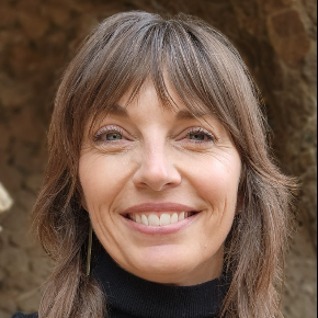
Melissa Afterman, MS-HFE, CPE
Director of the Online Ergonomics Certificate Program
University of California, Berkley
Melissa Afterman is the Director of the Online Ergonomics Certificate Program at the Northern California Center for Occupational and Environmental Health, a NIOSH supported Education & Research Center at UC Berkeley. She has 25 years of ergonomics consulting practice and is a senior ergonomist at University of California San Francisco, where she works with the UC Ergonomics Research Lab and Graduate Training Program. Melissa earned her Masters of Science degree in Human Factors/Ergonomics Engineering at San Jose State University and is the co-chair of the HFES Practitioners Committee.

Michelle Meyer
Director of Continuing Education
University of California, Berkeley
Michelle Meyer is Director of Continuing Education at the Center for Occupational and Environmental Health (COEH), where she facilitates the development and delivery of health and safety training and symposia. She joined COEH at the University of California, Berkeley in 2017 after spending a few years working at tech start-ups in the Bay Area, and working at an environmental non-profit in Syracuse, NY. She received her Bachelor of Science from the State University of New York College of Environmental Science and Forestry in 2013.
-
Register
- Non-member - $49
- More Information
-
Register